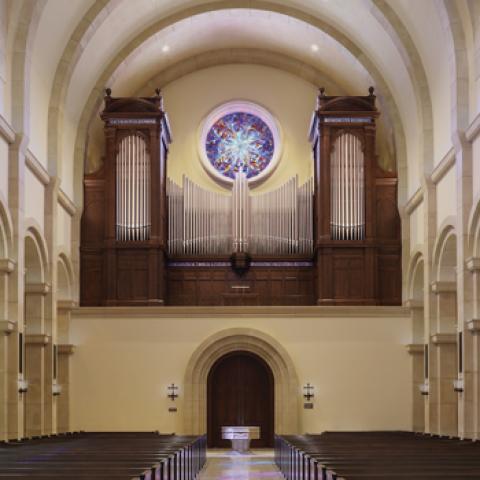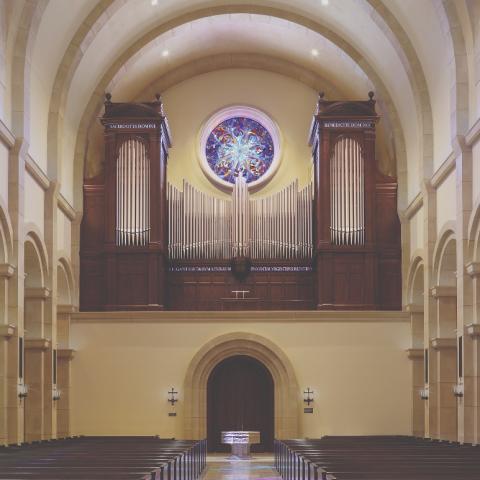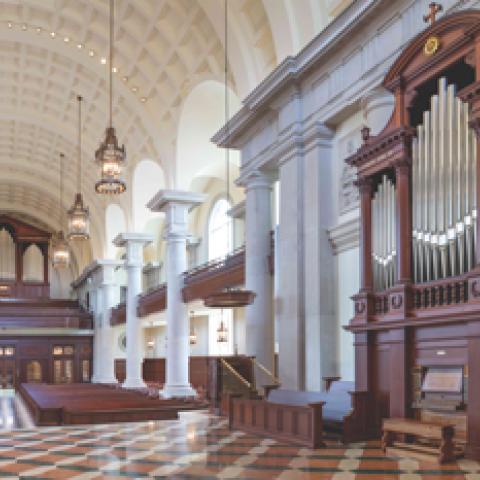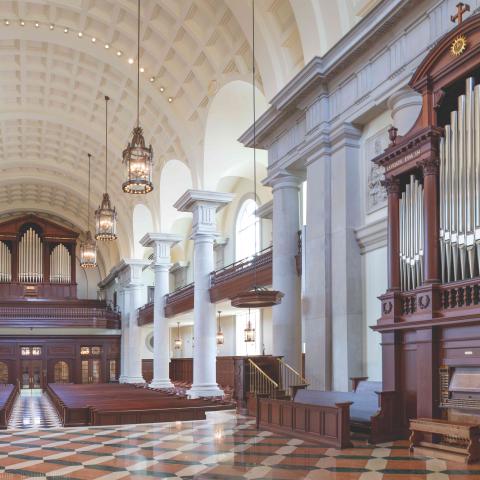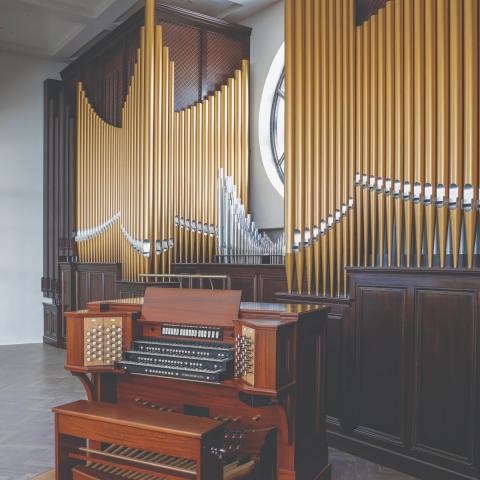
Schoentein & Co., Benicia, California, is building a three-manual, 34-rank organ for St. Michael’s Abbey, Silverado, California.
The Norbertine Fathers have constructed a new abbey that opened in 2021. The first phase of this project included the installation of Schoenstein’s Opus 116A, a small French choir organ to accompany the liturgy. Opus 183 is a 31-voice, 34-rank organ to be placed in the rear balcony of the abbey church with installation planned for summer 2023. The order priests regularly offer Masses for the public and host organists in recitals.
Schoenstein Opus 183 will utilize the builder’s study of Cavaillé-Coll organs over the years to fashion an instrument patterned after that tradition without being a precise copy. The new abbey has an acoustic similar to that of a French cathedral, and the new organ will offer an opportunity in the United States to hear French Romantic music where instrument and acoustic are both designed to support that repertoire.
For information: schoenstein.com.
Other organ builder news:

